What Israeli soldiers will face inside the labyrinth of Hamas tunnels

In 2013, Israeli army officer Achiya Klein was crouching in the desert near the Gaza Strip watching his team drill into a 65-foot deep, mile-long Hamas tunnel, ready to shove a camera down inside, when there was an explosion.
“Most of the bomb hit my face and upper body and threw me back,” he said. “The whole mission became a rescue mission.”
The booby trap wounded six soldiers, including Klein, who was left permanently blind. But he says his time with the Israel Defense Forces’ special tunnel unit prepared him for his disability. “It’s very uncomfortable to walk inside a tunnel and to be comfortable with the unknown,” Klein said 10 years later from his home in Toronto, “but now I am doing that every day walking down the street."
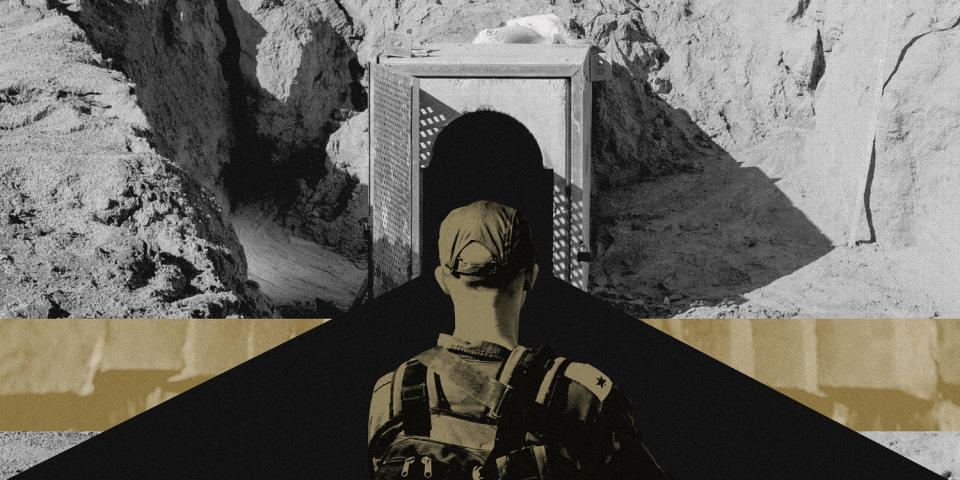
Klein’s experience highlights the dangers Israeli soldiers may face as the IDF prepares for a possible ground offensive or hostage rescue in Gaza. Military experts say Hamas’ extensive underground warren of tunnels could be a soldier’s nightmare and caution against sending any inside the stuffy, narrow passages, which are low on oxygen but full of twists and turns. Many of the high-tech advantages Israel enjoys above ground disappear when soldiers go underground.

Regular night vision goggles don’t work, communication among the IDF tunnel combatants is highly limited, and soldiers must bring their own oxygen supplies, respirators and chemical protective masks.
“It’s like being underwater,” said retired U.S. Army Lt. Gen. Mark Schwartz, who ran U.S. security coordination in Israel and the Palestinian Authority from 2019 through 2021.
Experts say soldiers who enter tunnels can quickly lose their bearings and some fall victim to vertigo, and passages can become so narrow that it’s almost impossible to turn around.
“I have been in the tunnels, and once you go down you very quickly lose all sense of direction and all sense of time,” said Daphné Richemond-Barak, an assistant professor at Israel’s Reichman University who founded the International Working Group on Subterranean Warfare and is considered to have written the most comprehensive book on the subject. “The consensus is that you only really send your soldiers in the tunnel as a measure of last resort, maybe to get hostages.”
As a possible hand-to-hand battle for Gaza looms, Klein is still urging on his successors in the IDF’s tunnel unit. “They need to make the sure the job is done,” he said. “But do not hurry and no need to take any risks.”
‘Short and shallow’
Israel’s enemies use at least four kinds of tunnels, according to experts.
Along the northern border with Lebanon, Hezbollah has used diamond-tipped drills to cut passages into rock.
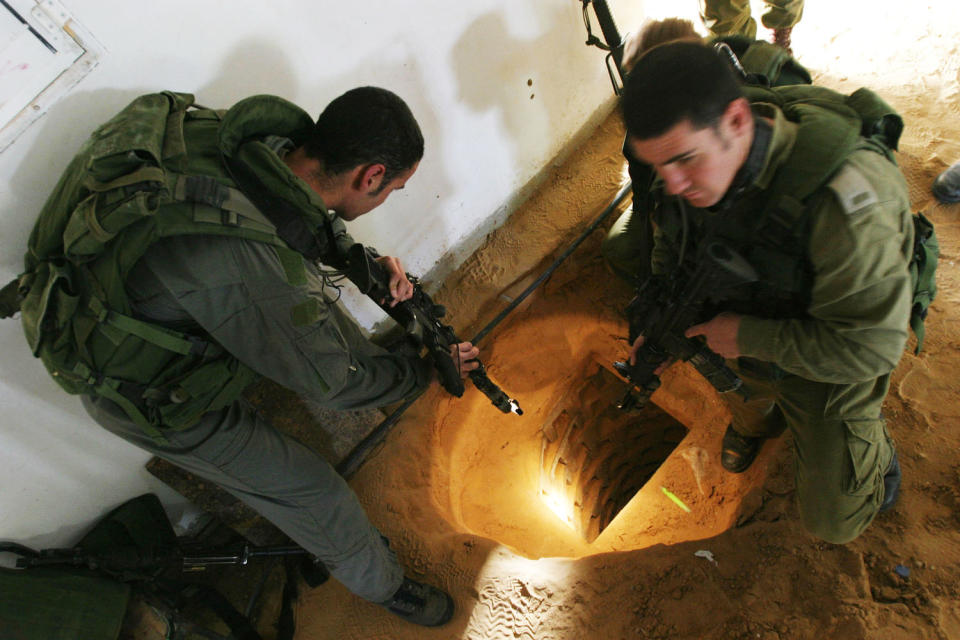
On the southern border, where Israel and Hamas are at war, tunnels from Gaza into Egypt have long been used to smuggle goods. Tunnels into Israel have been used for attacks on Israeli villages.
The labyrinth under Gaza itself is believed to be the most extensive, complex and sophisticated, with long passages zigzagging at different depths underground beneath population centers. Some have estimated their combined length at 150 to 300 miles, but Richemond-Barak and others say that is speculation.
Gazans have used tunnels as far back as the 1960s for smuggling, but at that time they were “short and shallow,” said Joel Roskin, a geomorphologist at Israel’s Bar-Ilan University and an IDF reserve major. The soil in Gaza is ideal for well-digging, he said, which also makes it ideal for tunneling. Early on, Roskin said, tunnel collapses were common, but over time Hamas learned how to fortify, starting with wood planks and then metal beams and cement.
Klein said that when he was in the IDF he watched as the tunnels evolved over time. He trained in shallow tunnels, but the tunnel his team found that extended from Gaza into Israel was much deeper and more advanced, with electricity and an intercom system. “It’s not like your children would do with their shovel. It was professional,” he said.
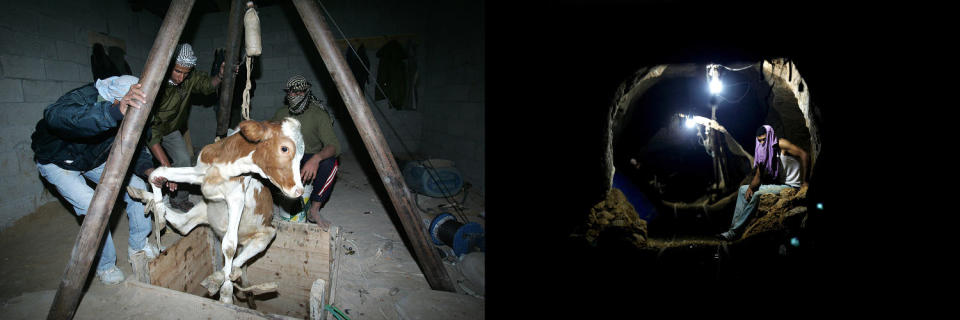
The first time Hamas used the tunnels for an attack on Israeli targets was in 2001, a few weeks after 9/11, according to testimony before the U.N., when it exploded a bomb under an Israeli military post. Once Israelis withdrew from Gaza in summer 2005, Hamas doubled down on developing tunnels, according to multiple experts. Hamas took over the government of Gaza in 2006. By 2014 Hamas had stepped up attacks through tunnels dug into Israel.
In response, the IDF dedicated a unit to entering, clearing and destroying the tunnels. Since 2004, Yahalom, the special forces unit of the Combat Engineering Corps, has had a commando sub-unit called Samur, the Hebrew word for “weasel.” Soldiers who can tolerate the claustrophobic environment inside the tunnels are recruited to become “weasels.”
Others might panic underground; Klein, who became a commander of the weasels, said he sometimes found the tight spaces “cozy.”
In 2020, researchers spoke to the IDF about the ideal tunnel combatants and determined the best candidates were introverted and “disconnected.”
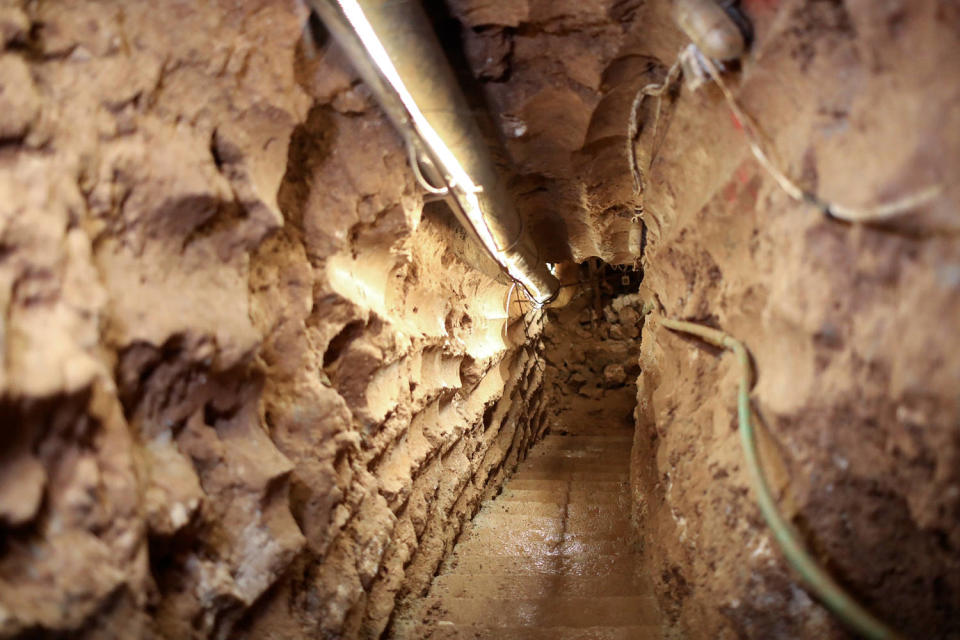
An officer explained that he wanted a soldier “who can make that psychological distance from the situation. ... You have to be able to distance yourself, to turn inward.”
The researchers interviewed a tunnel soldier who compared himself to a fighter pilot. “Really, with all the gear, you have to know how to operate; it’s [even] more complicated than operating an aircraft.”
Another tunnel soldier said that inside the tunnels, every meter traveled “is like crossing a desert for a month.”
A near miss
Nearly a decade ago, in May 2014, Israel foiled a major Hamas incursion into Israel from the tunnel system. Had Israel not intervened, said Eado Hecht, a defense analyst at The Begin–Sadat Center for Strategic Studies, hundreds of Israeli civilians could have been killed.
Israel said the reason it launched an attack on Gaza a few months later was to destroy the tunnels.
First, Israelis fought their way to the entrances, clearing booby traps, said Hecht, who testified before the U.N. Commission of Inquiry on the 2014 Gaza Conflict. The soldiers then searched each tunnel to find more branches and entrances. After each tunnel was cleared and mapped, IDF soldiers had to physically position 9 to 11 tons of explosives per tunnel to destroy them. Sixty-six Israelis and more than 1,500 Palestinians died in the conflict.
Hamas kept digging. After 2014 the tunnels became longer, wider and deeper than before, experts said.
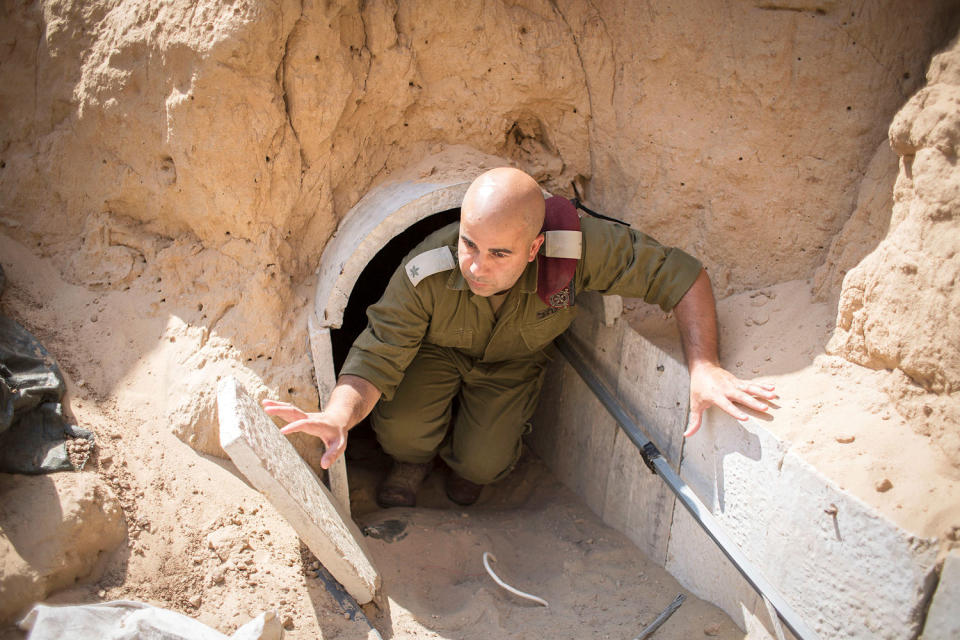
The IDF estimates each tunnel under Gaza costs $3 million to dig, and Hecht told the U.N. that in the past diggers were taken to sites in closed vehicles so they couldn’t see where they were and were kept underground for a few days while they dug. The Gaza tunnels aren’t used for civilians; they are reserved for Hamas, multiple military experts said.
New tunnels can be dug fairly quickly, with some estimates that a meter per day can be dug with tools as simple as a DeWalt hand drill, said retired U.S. Army Maj. John Spencer, the chairman of the Urban Warfare Project at West Point.
In 2021 the IDF said it destroyed more than 62 miles of the Hamas tunnel network. Hamas kept digging.
Oct. 7
Hamas succeeded in surprising Israel with its attack this month. Experts in underground warfare say they believe that in the Oct. 7 attack, fighters emerged from multiple tunnel exits just shy of the security fence around Gaza before they poured into southern Israel.
Those “approach tunnels” let Hamas pre-position weapons to be picked up quickly as fighters breached the fence. In past attacks, Hamas has been known to wait until right before an attack to finish a final stretch of tunnel so the entrance wouldn’t be exposed.
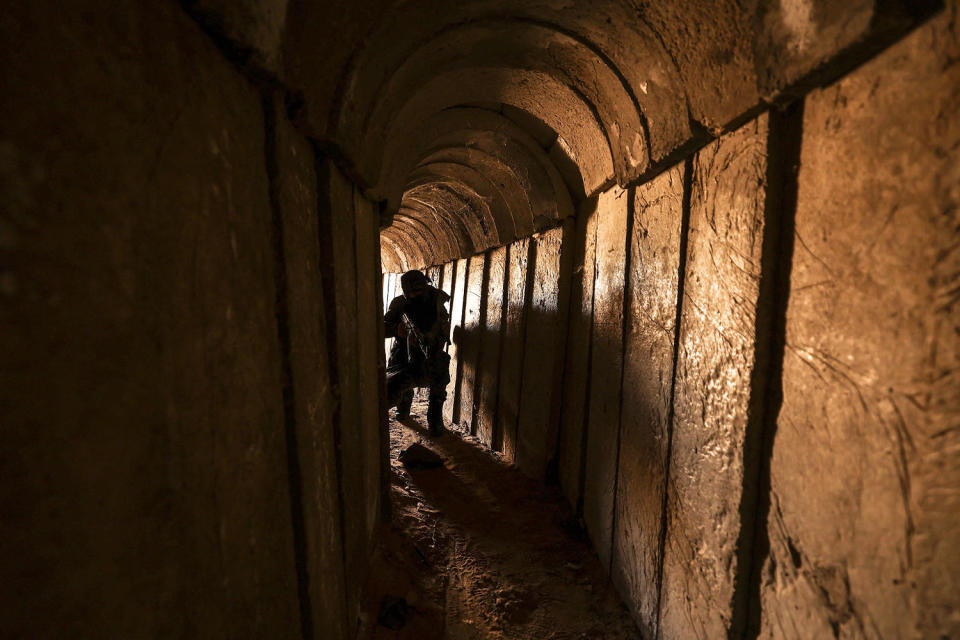
Richemond-Barak and others have said they suspect Hamas somehow must have breached or turned off the billion-dollar sensory barrier that Israel built to stop it from digging tunnels into Israel. She pointed to reports that fighters kept emerging after the military said the area near Gaza was secure.
She also said locating the entrance of a new tunnel is like finding a needle in a haystack. She said it took the IDF six weeks to find five Hezbollah tunnels during an IDF operation in 2018 along the Lebanese border.
“Most of our successes in finding and destroying tunnels over the past 10 years has been by stealing maps or capturing personnel involved in digging them,” Hecht said.
Richemond-Barak doesn’t expect any new maps out of the current operation because of the pressure to act. “Obviously mapping tunnels in Gaza right now is not going to happen.”
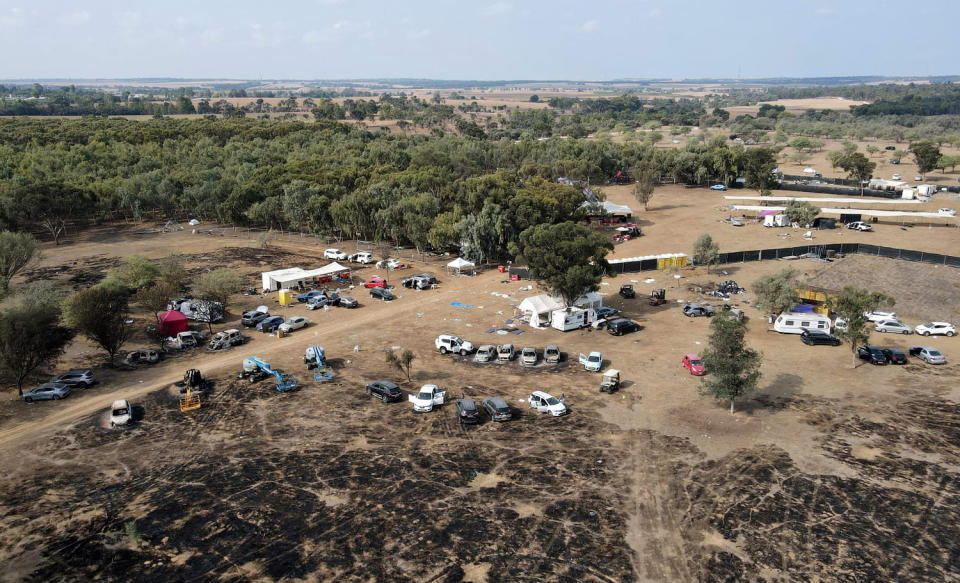
Once a tunnel has been found, robots that resemble small monster trucks or drones that can bounce off walls can go in first to map what’s ahead, Spencer said. But then it’s up to human fighters.
“Israel is going to have to take out significant parts — maybe not 100% of the tunnel system” under Gaza, Richemond-Barak said. “They have to take down this infrastructure while minimizing the harm to the civilian population. It’s a very complex riddle, and now there is no longer any choice.”
Any successes, however, may be only temporary. “You don’t destroy a tunnel; you damage a segment,” Roskin said, noting that tunnels can be resurrected.
This article was originally published on NBCNews.com

